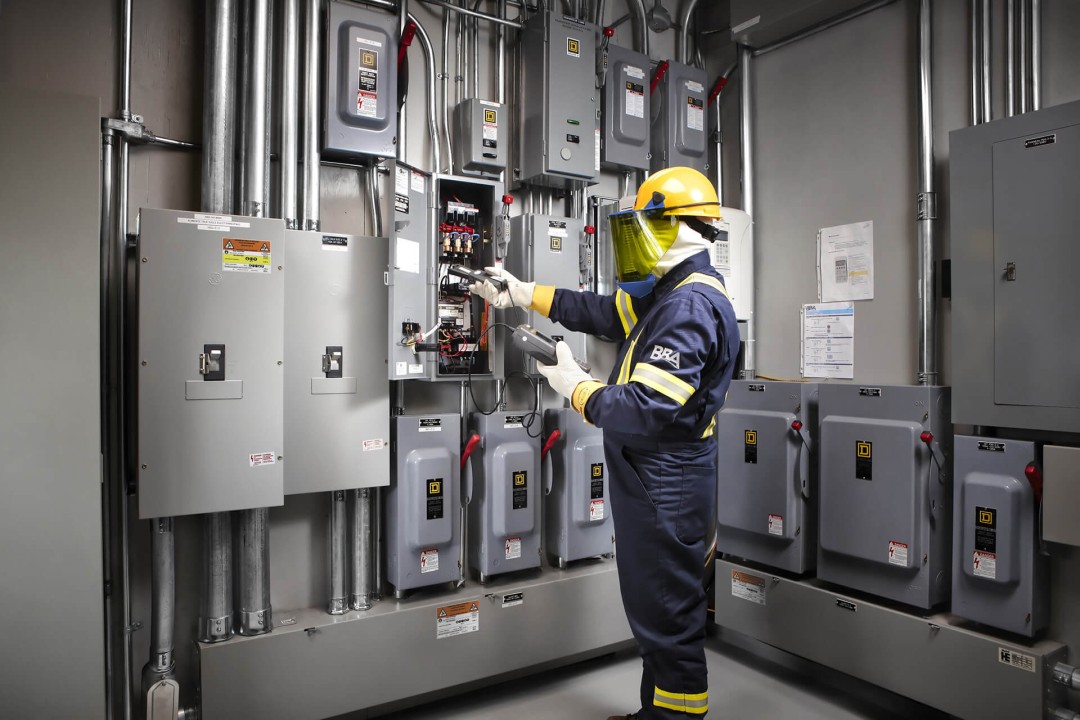In every workplace that handles electrical equipment, prioritizing safety is paramount. One of the most critical aspects of ensuring safety is understanding and effectively preventing arc flash hazards. An arc flash analysis involves conducting a comprehensive risk assessment, pivotal in identifying potential arc flash hazards within a specific environment.
By thoroughly evaluating the risks and implementing appropriate preventive measures, workplaces can significantly reduce arc flash incidents and enhance overall workplace safety. Organizations must invest time and resources into implementing proper safety protocols and providing comprehensive training to employees to mitigate the risks associated with arc flash hazards.
Understanding Arc Flash Analysis
Arc flash analysis is a comprehensive study conducted to determine the likelihood and severity of arc flash incidents. The process involves collecting fault current and overcurrent protective device data from the utility source. The aim is to identify potential hazards, estimate the likelihood and severity of incidents, and devise strategies to mitigate these risks.
Importance of Arc Flash Analysis
Arc flash analysis assessments are crucial in ensuring workplace safety. They help identify potential hazards that could lead to severe injuries or even fatalities. Moreover, a thorough, accurate arc flash risk assessment can save significant costs by preventing accidents and reducing downtime.
Steps to Conduct an Arc Flash Analysis
There is a detailed 9-step process for conducting an arc flash analysis.
- Data Collection: This is the first step where fault current and overcurrent protective device data from the utility source are gathered.
- System Modeling: This involves creating an electrical system model using collected data.
- Short Circuit Analysis: This step helps evaluate the maximum prospective short-circuit current.
- Protective Device Coordination: This ensures that only the nearest protective device operates to clear a fault.
- Arc Flash Hazard Calculation: Calculate the incident energy and arc flash boundary.
- Labeling: Equipment should be labeled after the evaluation to indicate potential hazards.
- Review of Work Procedures: Ensure all procedures are safe and comply with industry standards.
- Training: Employees should receive comprehensive training on arc flash hazards and safety procedures.
- Maintaining the Arc Flash Program: Regular risk assessments should be conducted to ensure ongoing safety.
Top Strategies for Arc Flash Safety
Here are the top five ways an arc flash analysis can help save lives:
- Regular Risk Assessments: Regular evaluations allow for the early identification of potential hazards, which can be addressed before they cause harm.
- Clear Labeling: Labeling equipment after evaluations helps workers understand the risks associated with each piece.
- Safety Training: Comprehensive electrical safety training can significantly reduce the risk of incidents.
- Proper PPE: Personal Protective Equipment (PPE) protects workers from potential hazards.
- Compliance With Standards: Following industry standards and regulations ensures a safe working environment.
Mastering Arc Flash Analysis: Strategies for Workplace Safety – In Conclusion
Mastering arc flash analysis is vital for every workplace that deals with electrical equipment. It ensures worker safety and saves money by preventing costly accidents and downtime. Regular risk assessments, unambiguous labeling, safety training, proper use of PPE, and compliance with standards are critical to a safer work environment.


